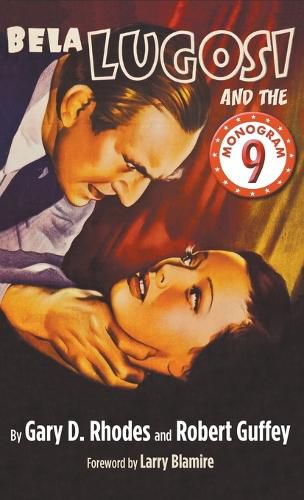Readings Newsletter
Become a Readings Member to make your shopping experience even easier.
Sign in or sign up for free!
You’re not far away from qualifying for FREE standard shipping within Australia
You’ve qualified for FREE standard shipping within Australia
The cart is loading…






This title is printed to order. This book may have been self-published. If so, we cannot guarantee the quality of the content. In the main most books will have gone through the editing process however some may not. We therefore suggest that you be aware of this before ordering this book. If in doubt check either the author or publisher’s details as we are unable to accept any returns unless they are faulty. Please contact us if you have any questions.
Between 1941 and 1944, Bela Lugosi starred in a series of low-budget films released by Monogram Pictures. To many viewers at the time and during the decades that followed, the Monogram Nine were overacted and underproduced, illogical and incoherent. But their increasing age has recast such condemnations into appropriate praise: in the 21st century, they seem so different not only from modern cinema, but also from Classical Hollywood, enough so as to make the aforementioned deficits into advantages. The entries in the Monogram Nine are bizarre and strange, populated by crazy, larger-than-life characters who exist in wacky, alternative worlds. In nine films, the improbable chases the impossible. This book, in turn, chases them.
Gary Rhodes has become my favorite nonfiction author, while the subject of some of his writings, Bela Lugosi, has long been one of my favorite actors. Now Gary has teamed up with co-author Robert Guffey to present, for the first time, a collection of in-depth and insightful essays evaluating those lesser ‘classics’ that comprise the so-called ‘Monogram Nine.’ If you are a Lugosi fan and also a fan of old ‘B’ horror films, you will love this book.
An extraordinary volume. Rhodes and Guffey refract these films through the lens of surrealism, detailed genre study, auteurist-informed close readings, star studies, and vigorous historicism to name a few of the kaleidoscope of methods employed. This book provides a breakthrough model for serious work on films that have to date received very little scholarly attention.
$9.00 standard shipping within Australia
FREE standard shipping within Australia for orders over $100.00
Express & International shipping calculated at checkout
This title is printed to order. This book may have been self-published. If so, we cannot guarantee the quality of the content. In the main most books will have gone through the editing process however some may not. We therefore suggest that you be aware of this before ordering this book. If in doubt check either the author or publisher’s details as we are unable to accept any returns unless they are faulty. Please contact us if you have any questions.
Between 1941 and 1944, Bela Lugosi starred in a series of low-budget films released by Monogram Pictures. To many viewers at the time and during the decades that followed, the Monogram Nine were overacted and underproduced, illogical and incoherent. But their increasing age has recast such condemnations into appropriate praise: in the 21st century, they seem so different not only from modern cinema, but also from Classical Hollywood, enough so as to make the aforementioned deficits into advantages. The entries in the Monogram Nine are bizarre and strange, populated by crazy, larger-than-life characters who exist in wacky, alternative worlds. In nine films, the improbable chases the impossible. This book, in turn, chases them.
Gary Rhodes has become my favorite nonfiction author, while the subject of some of his writings, Bela Lugosi, has long been one of my favorite actors. Now Gary has teamed up with co-author Robert Guffey to present, for the first time, a collection of in-depth and insightful essays evaluating those lesser ‘classics’ that comprise the so-called ‘Monogram Nine.’ If you are a Lugosi fan and also a fan of old ‘B’ horror films, you will love this book.
An extraordinary volume. Rhodes and Guffey refract these films through the lens of surrealism, detailed genre study, auteurist-informed close readings, star studies, and vigorous historicism to name a few of the kaleidoscope of methods employed. This book provides a breakthrough model for serious work on films that have to date received very little scholarly attention.